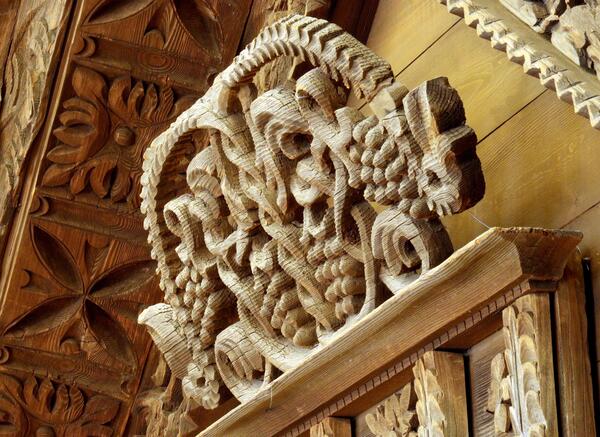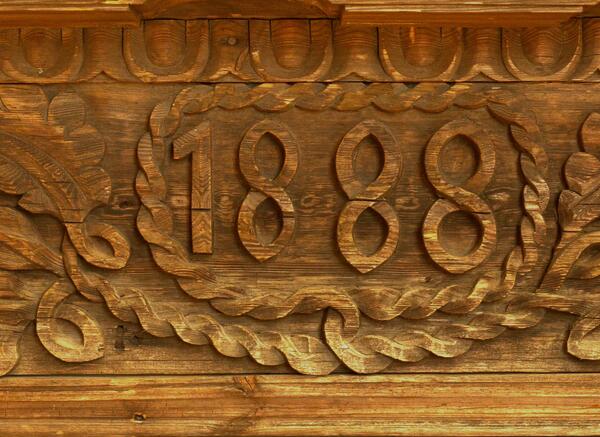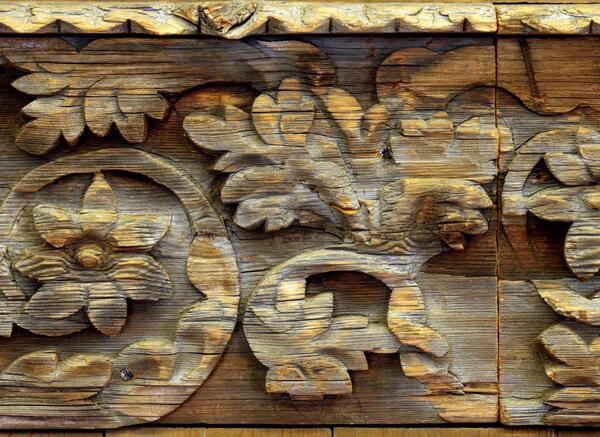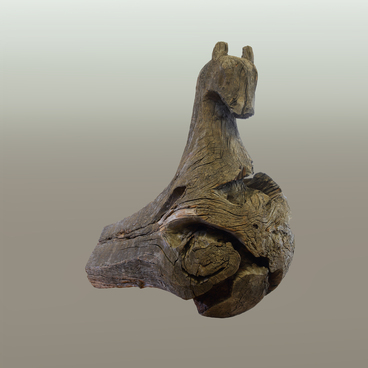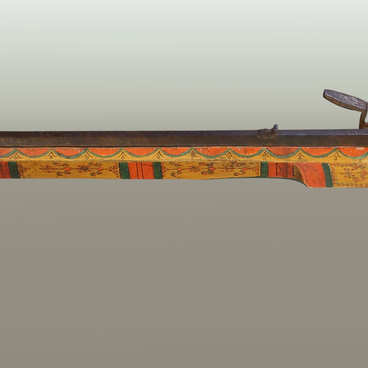Nizhny Novgorod house carving is a unique type of Russian folk art. The pediments, window shutters, multi-meter friezes provide food for the imagination of craftsmen, who filled the wooden surfaces with fabulous flowers and acanthus scrolls, from which good-natured lions with humanized muzzles, Sirin birds, guardian mermaids, dragons, and snakes looked out.
The mighty and elegant pediment was part of the house belonging to S.P. Maximov from the village of Valki, Lyskovsky district, Nizhny Novgorod region. It is on display in the permanent exhibition of folk art and serves as a typical example of the complex carved decoration of peasant houses and the skill of carvers. The exhibit was brought from an expedition to the Nizhny Novgorod region in 1967. The pediment is decorated with rosettes inside a square and a dense floral pattern, which emphasizes its impeccable architecture. The window is crowned with vines, echoing the exquisite peahens on the window shutters of the house.
For the relief carving, the Volga region artisans used wide pine boards that were from 4 to 6 cm thick. Patterns were first drawn on paper, and then a needle and a bag of coal dust were used to transfer the outlines to the smooth surface of the board. Large elements of the pattern were previously cut down with an axe, and then processed with chisels of various sizes and purposes. A special curved cutter — a spoon gouge — was used to carve the background and cut out wood in narrow places. After the carving was completed, the board was coated with drying oil several times or painted.
In the multi-patterned carving of Nizhny Novgorod houses, the artisans managed to achieve an organic fusion of urban classical architecture and local folklore. Rosettes and acanthus leaves coexist here with Sirin birds, lions, “pharaohs”, and dragons. Fairy-tale characters were considered to protect peasant homes and were most often placed on frieze boards, window shutters and pediments.
The collection of the Department of Folk Art in the Russian Museum contains parts of the 19th-century carved house decoration, as well as entire complexes of relief decorations. The houses of Dmitry Mokhov (1866), the Muravyovs (1857), and the Gordeevs (1855) are the most valuable and incredibly beautiful monuments of house carving.
The mighty and elegant pediment was part of the house belonging to S.P. Maximov from the village of Valki, Lyskovsky district, Nizhny Novgorod region. It is on display in the permanent exhibition of folk art and serves as a typical example of the complex carved decoration of peasant houses and the skill of carvers. The exhibit was brought from an expedition to the Nizhny Novgorod region in 1967. The pediment is decorated with rosettes inside a square and a dense floral pattern, which emphasizes its impeccable architecture. The window is crowned with vines, echoing the exquisite peahens on the window shutters of the house.
For the relief carving, the Volga region artisans used wide pine boards that were from 4 to 6 cm thick. Patterns were first drawn on paper, and then a needle and a bag of coal dust were used to transfer the outlines to the smooth surface of the board. Large elements of the pattern were previously cut down with an axe, and then processed with chisels of various sizes and purposes. A special curved cutter — a spoon gouge — was used to carve the background and cut out wood in narrow places. After the carving was completed, the board was coated with drying oil several times or painted.
In the multi-patterned carving of Nizhny Novgorod houses, the artisans managed to achieve an organic fusion of urban classical architecture and local folklore. Rosettes and acanthus leaves coexist here with Sirin birds, lions, “pharaohs”, and dragons. Fairy-tale characters were considered to protect peasant homes and were most often placed on frieze boards, window shutters and pediments.
The collection of the Department of Folk Art in the Russian Museum contains parts of the 19th-century carved house decoration, as well as entire complexes of relief decorations. The houses of Dmitry Mokhov (1866), the Muravyovs (1857), and the Gordeevs (1855) are the most valuable and incredibly beautiful monuments of house carving.

